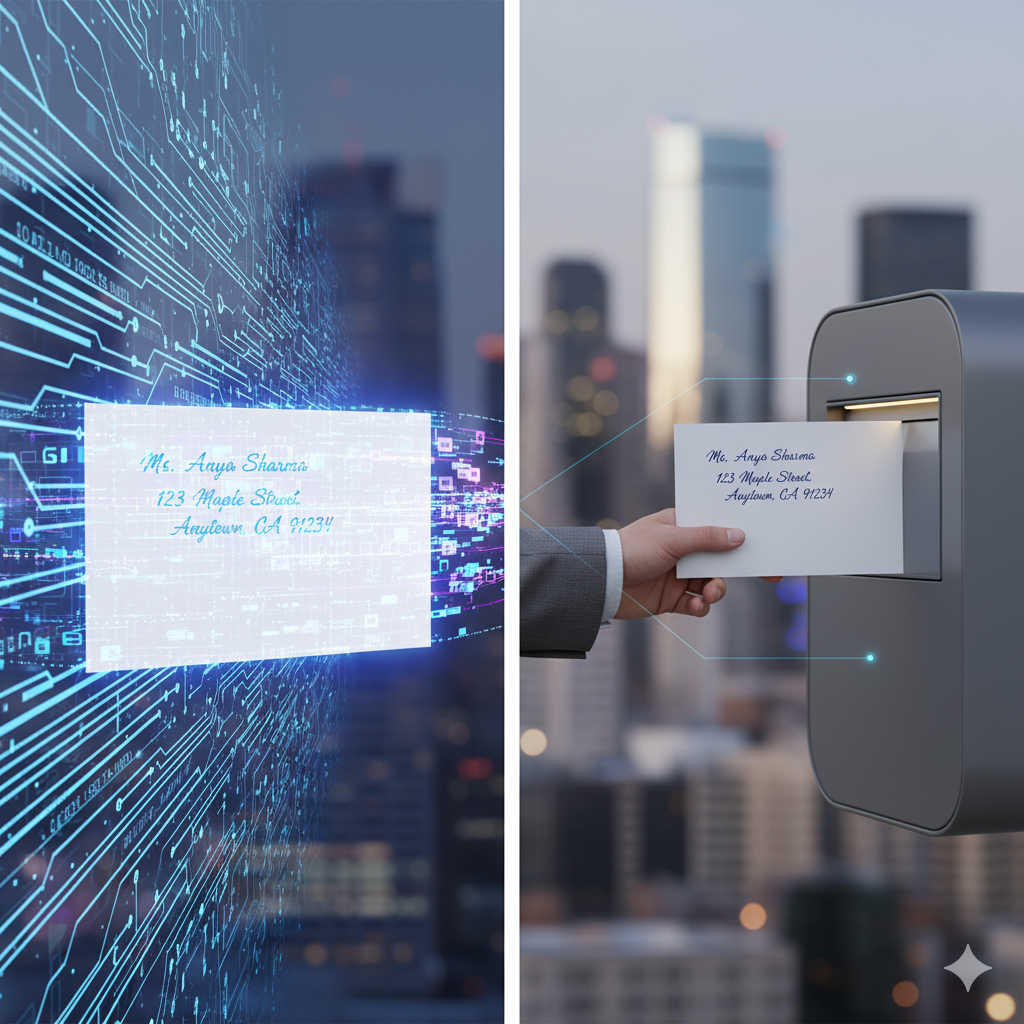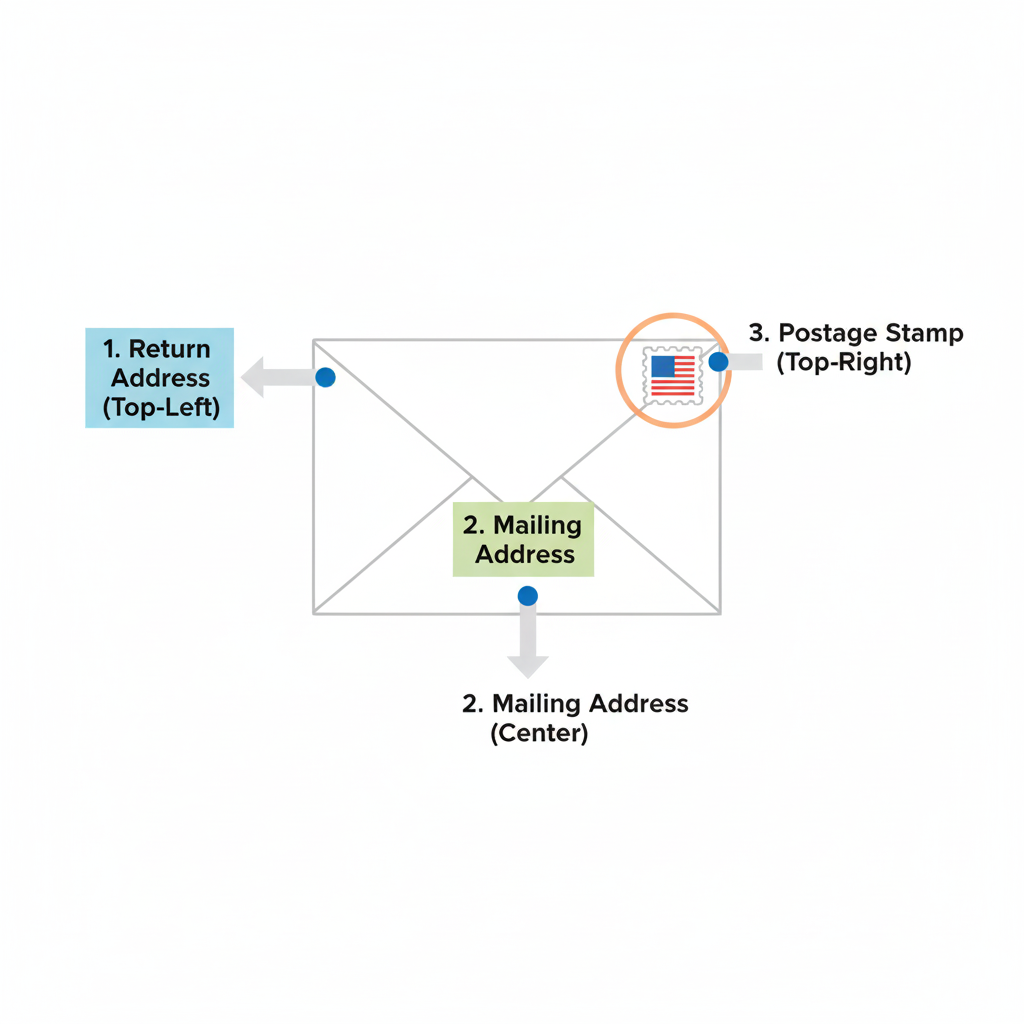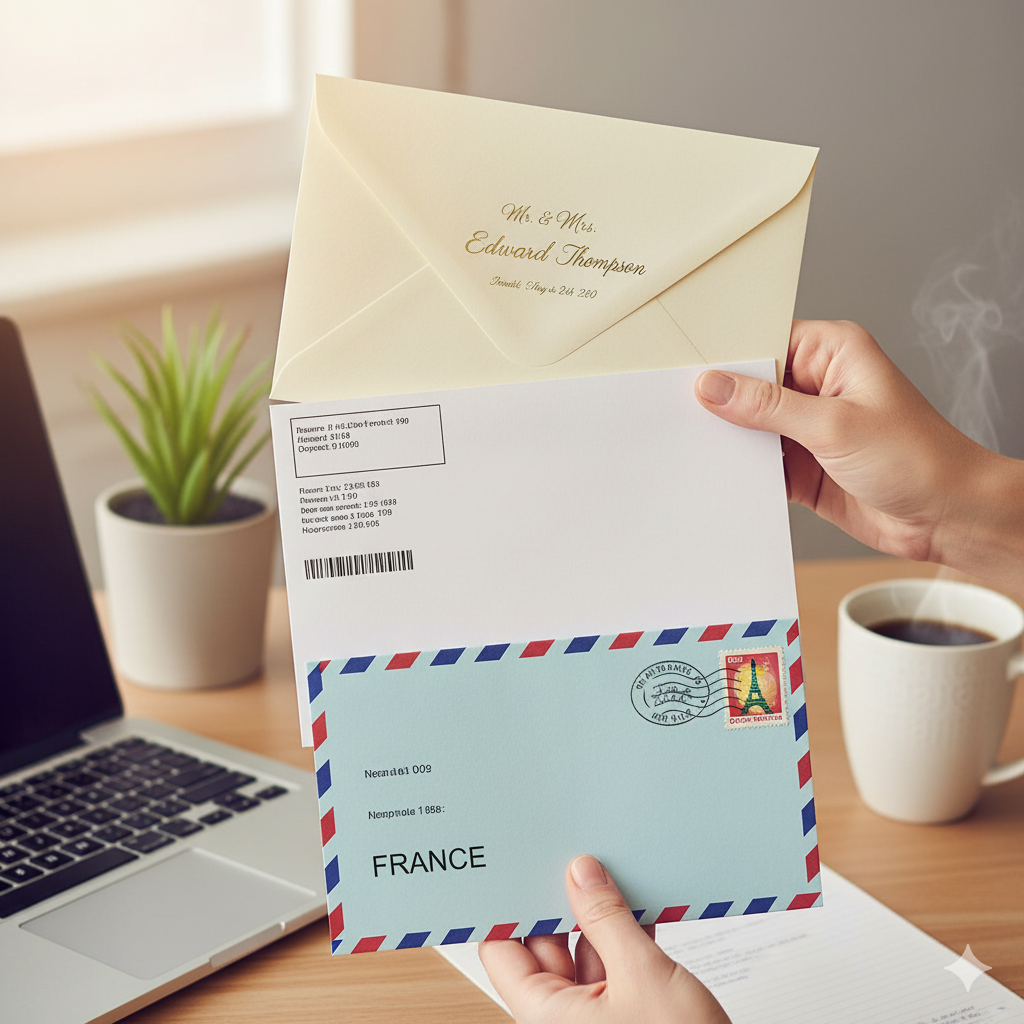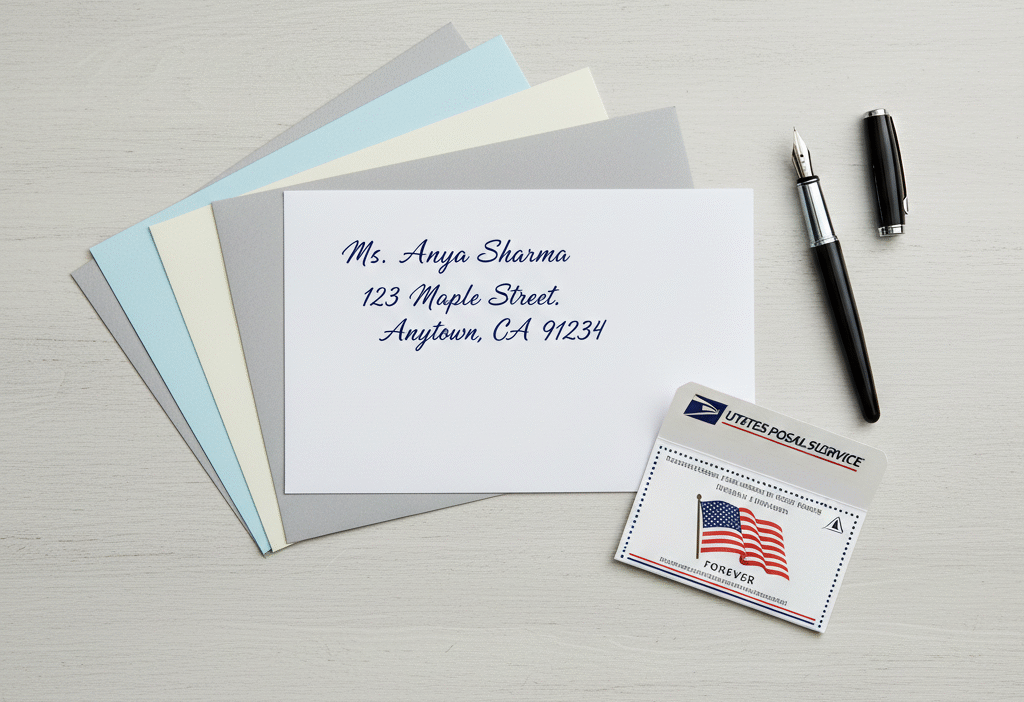In our fast-paced digital world, the act of sending a physical letter has become a powerful gesture of thoughtfulness and professionalism. Whether it’s a heartfelt thank-you note, a formal wedding invitation, or a critical business proposal, the envelope is the first thing the recipient sees. It sets the tone for what’s inside. Yet, many people find themselves pausing, unsure of the correct envelope addressing protocol. A poorly addressed envelope can lead to delays, lost mail, or an unintended impression of carelessness.
As someone who has managed high-volume professional mailings and sensitive personal correspondence for over a decade, I can attest that precision in this first step is non-negotiable. This comprehensive guide goes beyond the basics, drawing on official USPS guidelines, industry best practices, and years of hands-on experience to provide you with an authoritative resource. You will not only learn how to address an envelope correctly but also understand the nuances of postal etiquette that elevate your mail from simply functional to truly impeccable. Our goal is to equip you with the knowledge to send mail correctly with absolute confidence, ensuring every piece of correspondence you send is trusted to arrive on time and in style.
Why Proper Addressing is a Critical Skill in the Modern Age

You might wonder why such a seemingly simple task requires such detailed attention. The answer lies at the intersection of technology, logistics, and social perception.
First, logistical efficiency. The United States Postal Service (USPS) processes hundreds of millions of mail pieces daily. The vast majority are sorted by automated machines that use advanced optical character recognition (OCR) to read addresses at incredible speeds. A correctly formatted address—with the right placement, clear text, and standard abbreviations—allows these machines to process your letter in milliseconds. A single error, smudge, or misplaced element can force the envelope into a manual sorting stream, adding days to the delivery time and increasing the risk of it being lost entirely. In essence, proper mail formatting is the language you use to communicate with this sophisticated automated system.
Second, professional and personal perception. The envelope is the cover of your book. A sloppily addressed envelope suggests that the contents may be equally disorganized. For business correspondence, this can undermine your credibility before the recipient even opens the mail. For personal mail like wedding invitations, it reflects on the care and importance you assign to the event. Mastering envelope addressing is a small but significant act of respect for both the recipient and your own message.
Deconstructing the Envelope: Your Guide to Core Components
Before the pen even touches the paper, it’s essential to understand the two non-negotiable components of any correctly sent letter.
- The Return Address (Sender’s Information): This is your safety net. Located in the top-left corner, the return address serves a vital dual purpose. It informs the recipient of the sender’s identity at a glance, and crucially, it provides the postal service with a return path if the mail is undeliverable—due to an incorrect destination address, insufficient postage, or damage in transit. Omitting it is a risky gamble.
- The Mailing Address (Recipient’s Information): This is the roadmap. Centered on the envelope’s face, the mailing address provides the precise instructions for its journey from your hands to the recipient’s mailbox. Its accuracy, clarity, and placement are paramount for successful delivery. Any ambiguity here is the most common cause of failure in the mail system.
A Foolproof, Step-by-Step Guide to Flawless Envelope Formatting
Let’s transform theory into practice. Follow this detailed, expert-approved process to master your envelope formatting for any standard situation.

Step 1: Writing the Return Address – Your Security Protocol
- Location: The top-left corner of the envelope. Start about an inch from the top and left edges to ensure it’s fully visible and doesn’t interfere with postal markings.
- The Format – A Three-Line Standard:
- Line 1: Your full legal name or the name of the sender (e.g., “The Thompson Family” or “John Davis”).
- Line 2: Your complete delivery address. This must include your street number and name, and any secondary unit information like an apartment (Apt), suite (Ste), or building (Bldg) number. Be specific.
- Line 3: Your City, the official two-letter State Abbreviation, and the correct ZIP Code. Using the full state name is not incorrect, but abbreviations are the standard endorsed by USPS guidelines for machine efficiency.
789 Maple Drive, Unit 202
Austin, TX 78701
Step 2: Writing the Mailing Address – The Recipient’s Roadmap
- Location: The center of the envelope. Ideally, this should be positioned just to the right of the horizontal center and slightly below the vertical center. This provides the optimal scan zone for OCR machines.
- The Format – A Four-Line Blueprint for Success:
- Line 1: The recipient’s full legal name. For formal correspondence, always use appropriate honorifics such as Mr., Ms., Dr., or Professor. This shows respect and avoids ambiguity.
- Line 2: The company name or attention line. This is essential for business correspondence. If sending to a specific person within a company, you can use “ATTN: John Smith” on this line, with the company name below.
- Line 3: The complete delivery address. Include suite, floor, or P.O. Box details here. Double-check this information for accuracy; it’s the most common point of failure.
- Line 4: The City, State Abbreviation, and ZIP Code. For enhanced accuracy, use the ZIP+4 code if you know it.
ATTENTION: Research Department
101 Innovation Plaza, Suite 550
Boston, MA 02110-1803Real-World Example (Personal):Mr. and Mrs. James Wilson
2460 Oakwood Circle
Portland, OR 97205
Step 3: Affixing the Postage Stamp – The Key to Movement
Without the correct postage, your perfectly addressed envelope is going nowhere. The postage stamp is the payment for the service of delivery.
- Location: The top-right corner of the envelope. It should be placed squarely, with its edges parallel to the edges of the envelope.
- Details: For a standard, one-ounce, rectangular letter within the United States, a single “Forever” stamp is sufficient. However, weight, size, and shape matter. Non-standard envelopes (square, rigid, or oversized) require additional postage. The same applies for heavier mail or international mailing. When in doubt, use the USPS postage calculator on their website or visit a local post office to avoid your mail being returned for insufficient postage.
Advanced Scenarios and Etiquette: Navigating Complex Addressing
Once you’ve mastered the standard format, you’ll encounter situations that require a more nuanced approach.
1. Addressing a Family or Household:

- Informal: “The Henderson Family” at their address is perfectly acceptable for a casual letter or holiday card.
- Formal Invitations: For events like weddings, it is traditional to list the parents’ names on the outer envelope (e.g., “Mr. and Mrs. David Henderson”) with the understanding that the invitation extends to their children. Alternatively, you can list the children’s names on the inner envelope.
2. International Mailing:
Sending mail abroad requires one crucial addition. The format remains largely the same, but the final line of the mailing address must be the destination country’s name, written in all capital letters. This immediately alerts the USPS and the destination country’s postal service to the international routing required.
text
*Example:* > Ms. Sophie Laurent > 88 Rue du Faubourg Saint-Honoré > 75008 PARIS > FRANCE
3. Business Correspondence and Attention Lines:
When mailing to a company but directed to a specific individual, the “ATTN:” or “Attention:” line is critical. It ensures the mail is routed to the correct desk within a large organization. The preferred method is to place it as the second line.
text
*Example:* > Global Technologies Inc. > ATTN: Ms. Priya Sharma, Marketing Director > 1234 Business Ave, Floor 12 > New York, NY 10016
Expert Tips to Elevate Your Postal Etiquette from Good to Great
To ensure your mail is not just correct, but truly professional, integrate these pro tips derived from years of experience and USPS guidelines.
- Prioritize Machine Readability Above All: This is the golden rule. Use a pen with dark, permanent ink (black or blue are best) on a light-colored envelope. Ensure you have legible handwriting. If your penmanship is poor, do not hesitate to print the addresses using a label or a printer. The goal is maximum contrast and clarity for the automated sorting machines.
- Embrace the Power of Abbreviations: Use standard two-letter state codes (e.g., CA, NY, IL, FL) and standard abbreviations for street types (ST for Street, AVE for Avenue, BLVD for Boulevard, etc.). This is not just a suggestion; it is a core part of efficient mail formatting that aligns with postal system databases.
- Maintain a Clean and Uncluttered Canvas: Avoid using any unnecessary punctuation, such as periods or commas. The modern standard for automated mail is a streamlined format without punctuation. For example, write “Apt 4B” not “Apt. 4B.” This reduces the chance of misreads by OCR technology.
- Double-Check the ZIP Code: The ZIP code is arguably the most important element for initial sorting. A missing or incorrect ZIP code will almost certainly cause a significant delay. Always verify it using the USPS ZIP Code lookup tool online.
Frequently Asked Questions (FAQ)
Q1: Is it okay to use printed labels instead of handwriting the address?
Absolutely. Using printed address labels is not only acceptable but often recommended for business correspondence and anyone seeking a polished, professional look. Printed labels guarantee legible handwriting and consistency. Ensure the print quality is high, the font is clear and sans-serif (like Arial or Calibri), and the label is applied smoothly in the correct position.
Q2: What is the proper etiquette for addressing an envelope to a married couple?
This depends on the couple’s preferences and the formality of the correspondence.
- Heterosexual, Traditional: “Mr. and Mrs. James Wilson”
- Heterosexual, Modern: “James and Samantha Wilson”
- Same-Sex Couple: “Mr. and Mr. Henry Smith” or “Ms. and Ms. Anna Garcia”
- Different Last Names: “Ms. Emily Zhang and Mr. Daniel Brown”
When in doubt, using both full names is a safe and respectful modern approach.
Q3: Where does the stamp go on an unusually shaped envelope?
The rule of thumb remains: the stamp goes in the top-right corner of the envelope’s “face”—the side meant for the address and postage. For square envelopes, rigid mailers, or large flats, always place the stamp in the uppermost right corner of that address side.
Q4: What happens if I make a mistake and write the wrong ZIP code?
A wrong ZIP code will misdirect your mail to the correct city and post office, where a human sorter will (hopefully) catch the error based on the street address and redirect it. This process adds a minimum of two to three days to the delivery time, and if the street address doesn’t exist in the mistaken ZIP code zone, the letter could be marked “Undeliverable” and returned to you—but only if you included a return address.
Q5: Can I use decorative or colored ink on my envelopes?
While you can for personal mail, it is a risk. Light-colored inks (like yellow or pastel) can lack the necessary contrast for OCR machines to read. Metallic or glitter inks can smudge or flake off, obscuring the address. For guaranteed delivery, it is always best to use dark, standard ink for the address blocks, saving your creativity for the borders or the back flap of the envelope.
Conclusion: Send with Confidence and Make Your Mark
Envelope addressing is far more than a mundane task; it is a practical life skill and a subtle art form. It connects us personally and professionally in a way that a digital message cannot replicate. By following this exhaustive guide, you are doing more than just placing text on paper. You are demonstrating expertise, showing respect for the recipient, and leveraging a complex, global logistics network with precision.
You now possess the authoritative knowledge to handle everything from casual personal notes to critical business correspondence and complex international mailing with ease. This mastery ensures that your important messages are not only trusted to arrive but also make a powerful and positive first impression. So, pick up your pen, and send mail correctly with the complete peace of mind that comes from true understanding.





